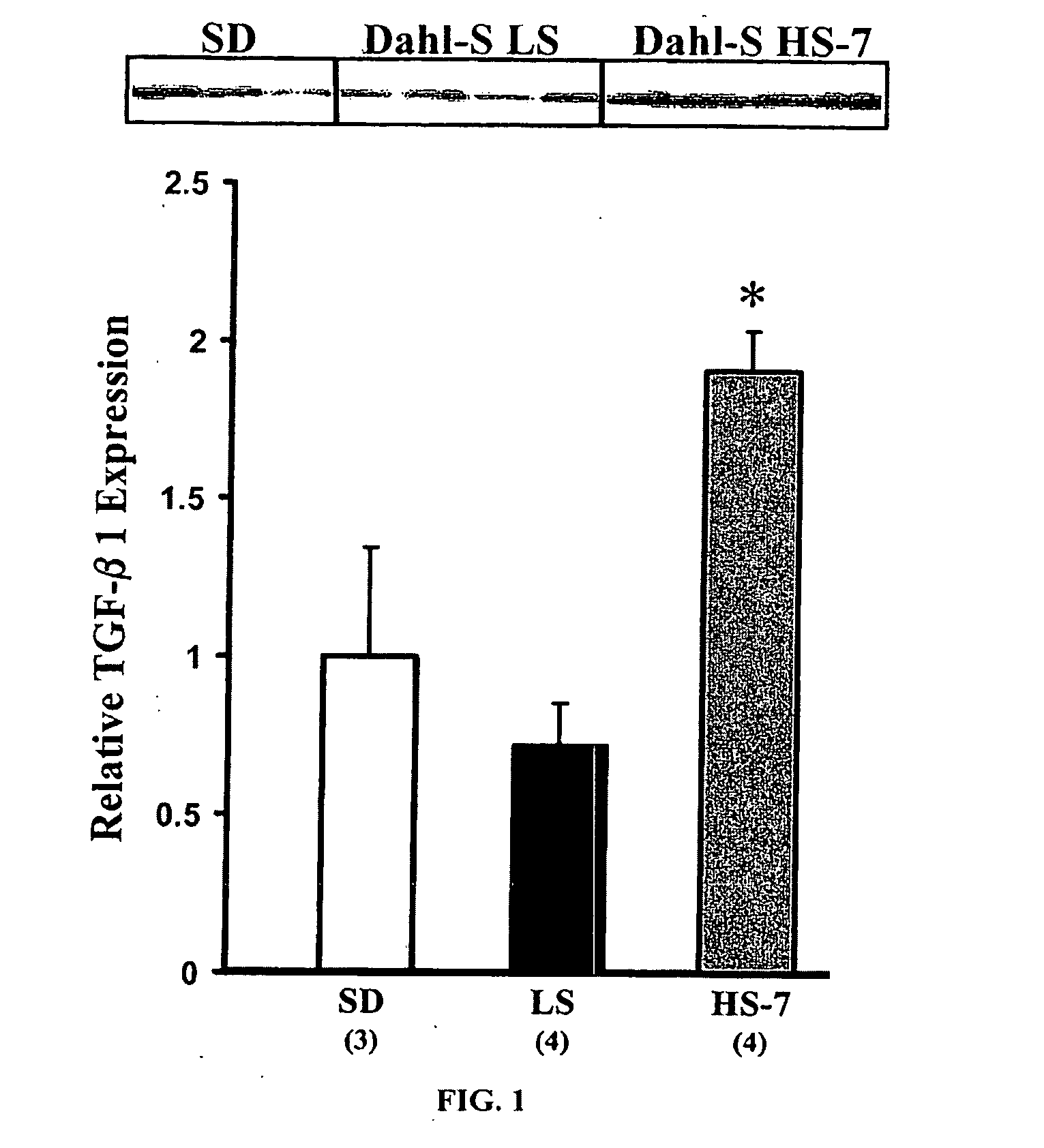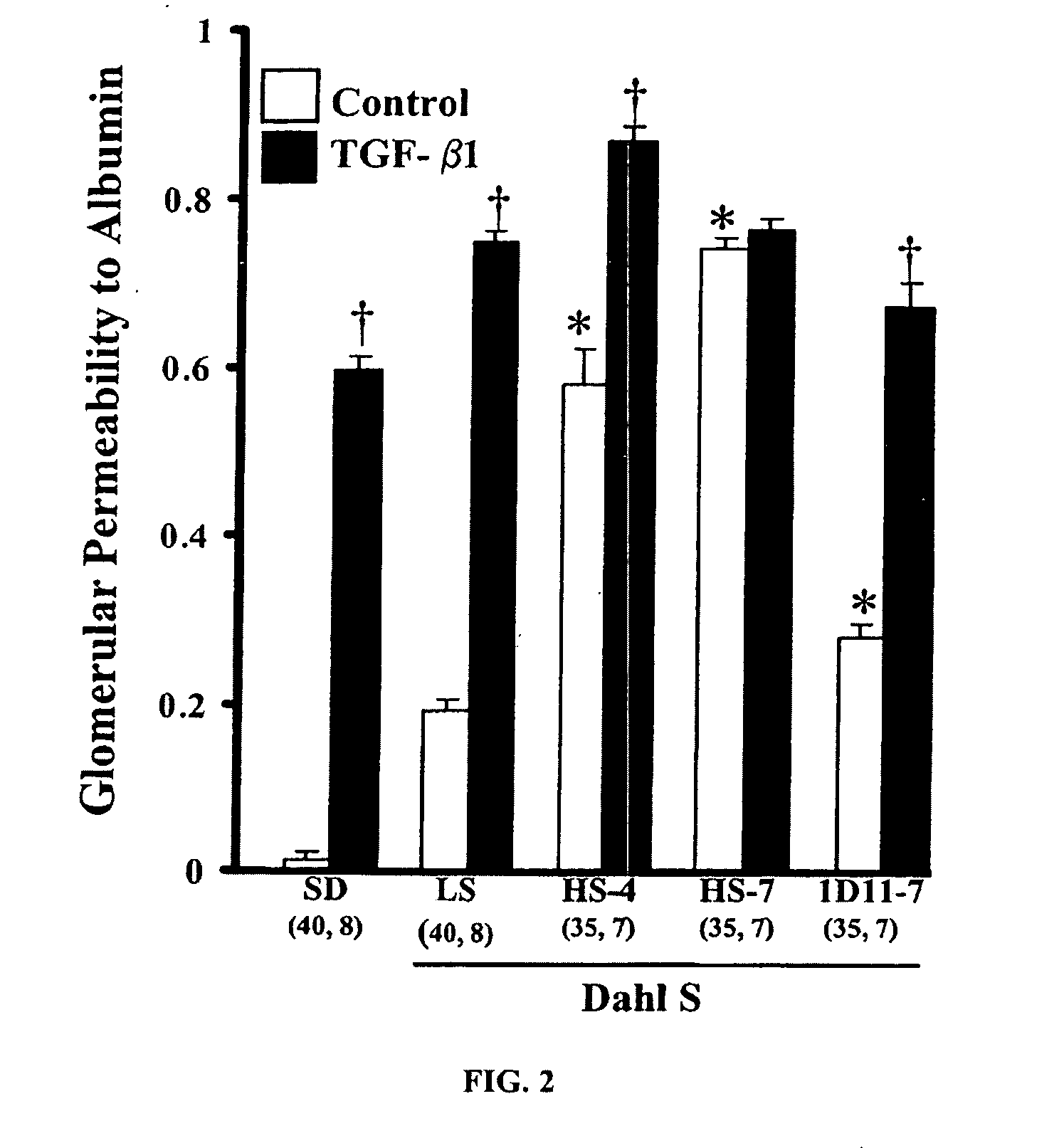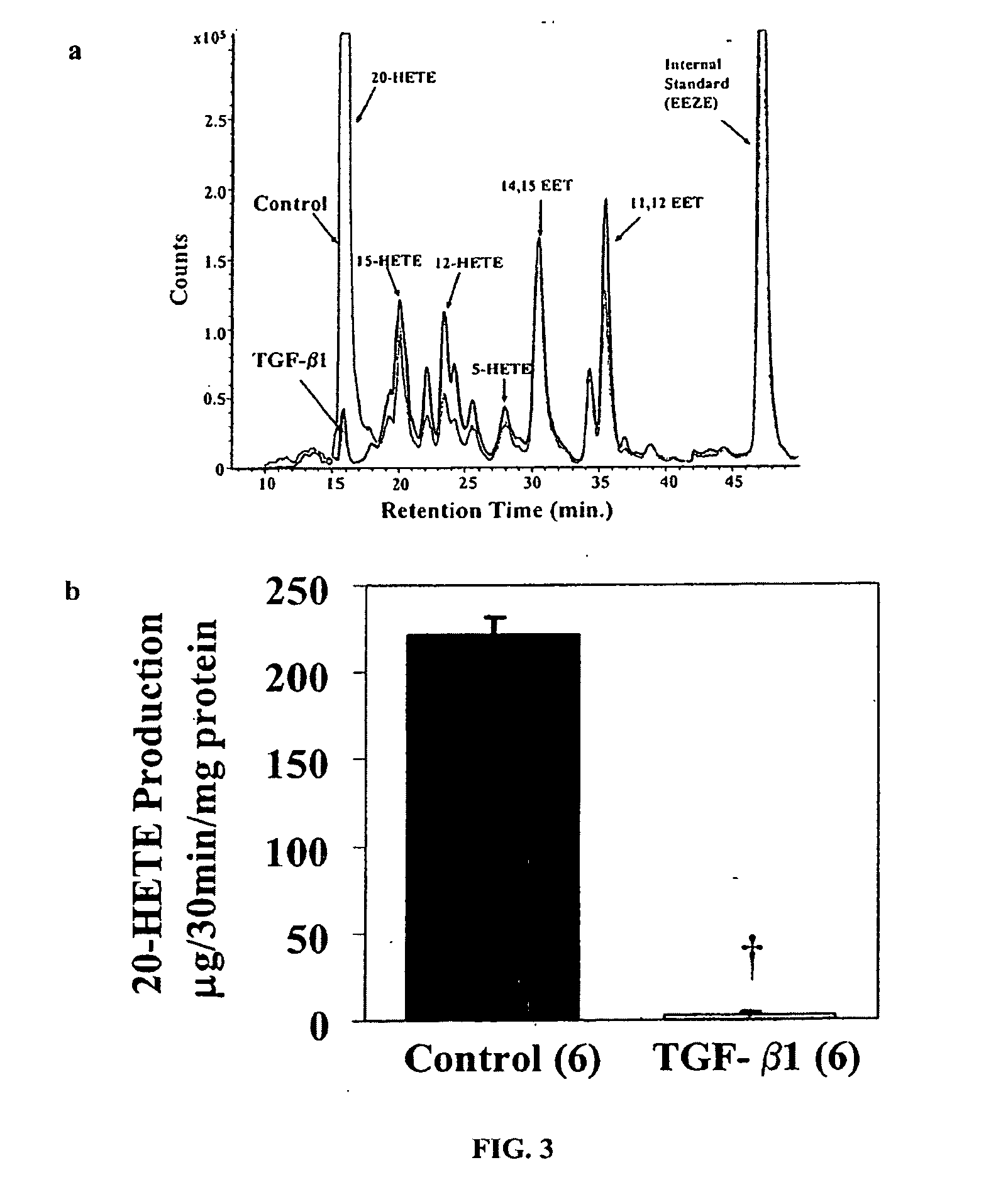Method for treating renal disease
a technology for renal disease and treatment, applied in the field of treatment of renal disease, can solve the problems of increasing the incidence of esrd, small percentage of patients achieving adequate life-long control of blood pressure, and serious compliance and drug costs, so as to prevent or reduce the severity of damage to the kidney, prevent or reduce the effect of kidney damag
- Summary
- Abstract
- Description
- Claims
- Application Information
AI Technical Summary
Benefits of technology
Problems solved by technology
Method used
Image
Examples
example 1
20-HETE Analog Opposes TGF•-Induced Glomerular Injury
[0042]This example shows that TGF-alters the glomerular permeability by inhibiting the glomerular production of 20-HETE. Renal expression of TGF-• doubled in Dahl S rats fed a high salt diet for 7 days, which was associated with a marked rise in permeability to albumin (Palb) from 0.19±0.04 to 0.75±0.01, along with changes in the ultrastructure of the glomerular filtration barrier. Chronic treatment of Dahl S rats with a TGF-• neutralizing antibody prevented the increase in Palb and preserved the structure of glomerular capillaries proving that hypertension-induced renal disease is dependent on increased formation and action of TGF-•. It had no effect on the rise in blood pressure produced by the high-salt diet. Preincubation of glomeruli isolated from SD rats with TGF-•1 (10 ng / ml) for 15 minutes increased Palb from 0.01±0.01 to 0.60±0.02. This was associated with inhibition of the glomerular production of 20-HETE from 221±11 to ...
example 2
Protection of Kidney from Ischemic Injury by 20-HETE and 20-HETE Analogs
[0060]This example shows the effect of the 20-HETE analog, 5, 14-20-HEDE (WIT003), on protecting the kidney from renal I / R injury. 5, 14-20-HEDE significantly reduced the degree of renal I / R injury reflected by preventing a rise in creatinine concentration.
[0061]Materials and Methods.
[0062]Renal Ischemia-Reperfusion Injury Model: Experiments were performed in male SD rats anesthetized with pentobarbital (50 mg / kg). The kidneys were exposed via a midline incision and the renal arteries isolated. Adjustable vascular occluders were placed on both the right and left renal arteries to completely occlude blood flow to the kidneys for 30 minutes. After the period of complete renal ischemia, the clamps were removed and the kidneys were reperfused. The surgical incisions were closed with 2-0 silk suture and the animals were allowed to fully recover from anesthesia. Twenty four hours later, the rats were reanesthetized wi...
example 3
Protection of Kidney from Ischemic Injury by Additional 20-HETE Analogs
[0067]This example shows that the 20-HETE analogs, 5, 14-20-HEDE and 5,14-20-HEDGE, reduced renal injury and that the reduced renal injury was associated with preserved renal medullary blood flow following renal I / R injury. Administration of HET0016, a selective inhibitor of the renal formation of 20-HETE, exacerbated renal injury and plasma creatinine rose to 3.8±0.3 mg / dl. Conversely, administration of 5,14-20-HEDE or 5,14-20-HEDGE attenuated renal injury, and plasma creatinine only rose to 1.6±0.3 mg / dl and 0.5±0.02 mg / dl, respectively. In control rats, MBF measured by laser-Doppler flowmetry decreased to 50% of baseline 1 hour after reperfusion. 5, 14-20-HEDGE completely prevented the post-ischemic fall in MBF without altering MAP or CBF. 20-HETE and its analogs therefore appear to protect the kidney from renal I / R injury by preventing a post-ischemic fall in MBF and provide a rationale for the development of...
PUM
| Property | Measurement | Unit |
|---|---|---|
| Length | aaaaa | aaaaa |
| Flow rate | aaaaa | aaaaa |
| Distance | aaaaa | aaaaa |
Abstract
Description
Claims
Application Information
 Login to View More
Login to View More - R&D
- Intellectual Property
- Life Sciences
- Materials
- Tech Scout
- Unparalleled Data Quality
- Higher Quality Content
- 60% Fewer Hallucinations
Browse by: Latest US Patents, China's latest patents, Technical Efficacy Thesaurus, Application Domain, Technology Topic, Popular Technical Reports.
© 2025 PatSnap. All rights reserved.Legal|Privacy policy|Modern Slavery Act Transparency Statement|Sitemap|About US| Contact US: help@patsnap.com



